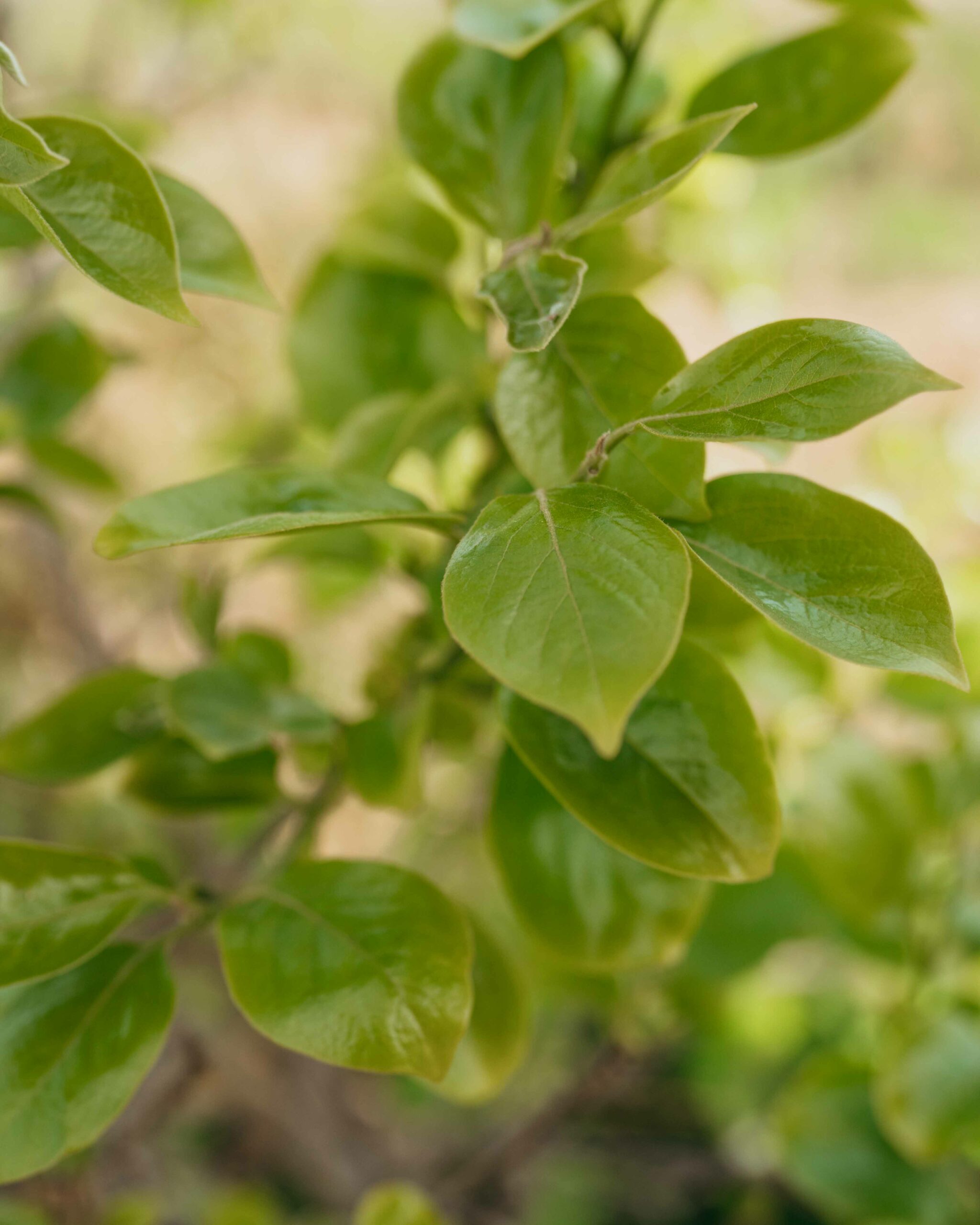Diospyros kaki
KAKI
Englische Bezeichnung: Persimmon
Spanische Bezeichnung: Caqui, Palosanto
Familie
Ebenholzgewächse (Ebenaceae)
Verwendbare Teile:
Frucht
Hauptbestandteile:
Mineralstoffe: Kalium
Vitamine: C, K, Beta-Carotin (Provitamin A)
Sekundäre Pflanzenstoffe: Antioxidantien, Polyphenole
Ernte-Hinweise:
Eine reife Kaki erkennt man daran, dass sich das Fruchtfleisch leicht eindrücken lässt.
Verwendung:
Obstalat, Desserts, Marmelade, Chutney, Kompott
Der wissenschaftliche Name Diospyros stammt aus dem Griechischen und bedeutet übersetzt „Göttliches Feuer“. Der Name „Kaki“ ist japanischen Ursprungs und ist dort eine Bezeichnung für die Früchte des Kakibaumes, der auf japanisch „kakinoki“ heißt.
Family
Ebony family (Ebenaceae)
Usable parts:
Fruit
Main components:
Minerals: Potassium
Vitamins: C, K, beta-carotene (provitamin A)
Secondary plant substances: antioxidants, polyphenols
Harvesting guideline:
You can recognise a ripe persimmon by the fact that the flesh can be easily pressed in.
Use:
Fruit salad, desserts, jam, chutney, compote
The scientific name Diospyros comes from the Greek and means „divine fire“. The name „persimmon“ is of Japanese origin and refers to the fruit of the persimmon tree, which is called „kakinoki“ in Japanese.
Familia
Familia del ébano (Ebenaceae)
Partes utilizables:
Fruta
Componentes principales:
Minerales: Potasio
Vitaminas: C, K, betacaroteno (provitamina A)
Sustancias vegetales secundarias: antioxidantes, polifenoles
Guía de cosecha:
Un caqui maduro se reconoce porque la pulpa se puede presionar con facilidad.
Uso:
Ensalada de frutas, postres, mermelada, chutney, compota
El nombre científico Diospyros procede del griego y significa „fuego divino“. El nombre „caqui“ es de origen japonés y hace referencia al fruto del árbol del caqui, que en japonés se llama „kakinoki“.







































